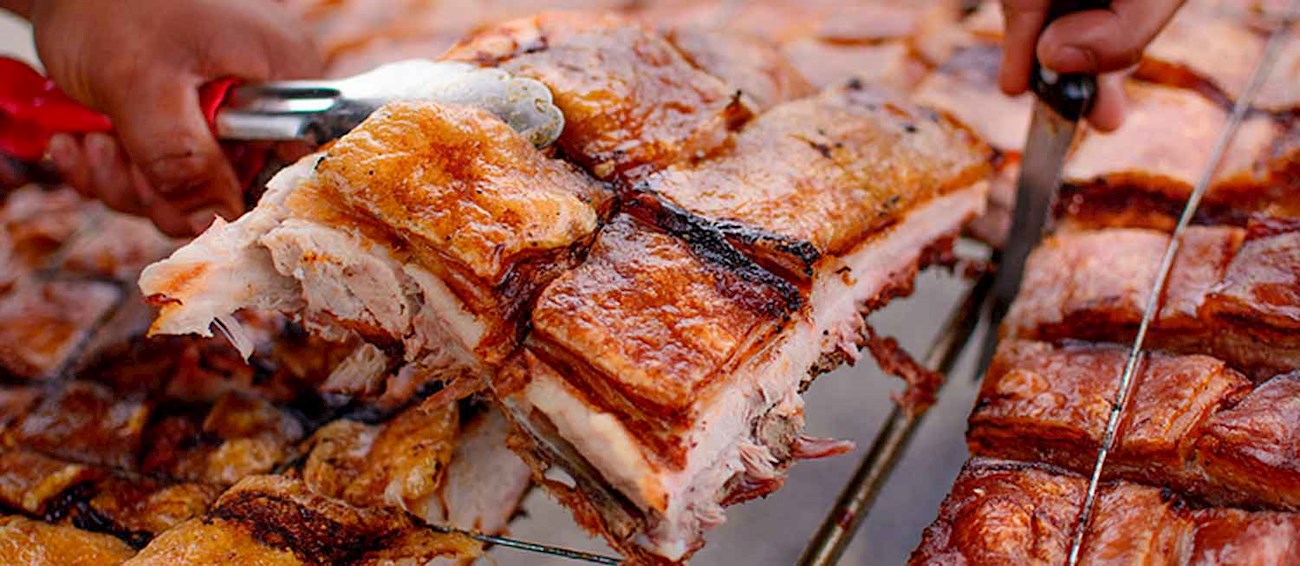Pachamanca is an ancient Peruvian dish made by cooking marinated pieces of meat (usually lamb), herbs, chilis, beans, and a variety of Peruvian potatoes in a hole in the ground (huatia). The ingredients are placed on hot stones and covered with leaves in order to create a natural pot in the ground.
The name of the dish means earth pot, referring to the preparation process. The dish is traditionally cooked for about three hours, and nowadays it can be found in numerous rustic restaurants throughout Peru.
MOST ICONIC Pachamanca
View moreMAIN INGREDIENTS
Chancho al palo is a traditional dish from Huaral that translates to "pork on the pole." The main characteristic of chancho al palo is the cooking method. A whole pig or large cuts of pork are marinated with spices and then skewered on large vertical or diagonal stakes.
The stakes with the pork are then set around a wood fire, allowing the meat to roast slowly and evenly. The pork is typically marinated with a mix of Peruvian spices and ingredients, including garlic, cumin, aji panca, and other seasonings meant to infuse flavor into the meat.
MAIN INGREDIENTS
Copús is a traditional dish originating from Piura. The dish is made by layering ripe bananas, sweet potatoes, and seasoned meat such as turkey, chicken, mutton, and goat in a clay pot. The clay pot is sealed with blankets and clay, and it's then cooked in a hole in the ground, similar to the dish and cooking technique called pachamanca.
Once done, the dish is enjoyed as it is. Copús is typically made for festive occasions such as baptisms, weddings, and religious festivals.
TasteAtlas food rankings are based on the ratings of the TasteAtlas audience, with a series of mechanisms that recognize real users and that ignore bot, nationalist or local patriotic ratings, and give additional value to the ratings of users that the system recognizes as knowledgeable. TasteAtlas Rankings should not be seen as the final global conclusion about food. Their purpose is to promote excellent local foods, instill pride in traditional dishes, and arouse curiosity about dishes you haven’t tried.





